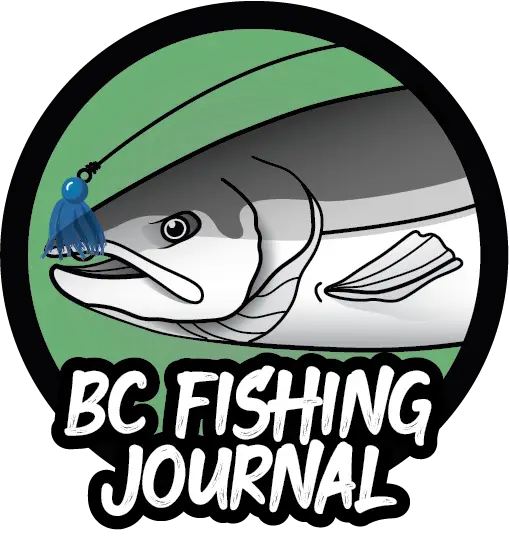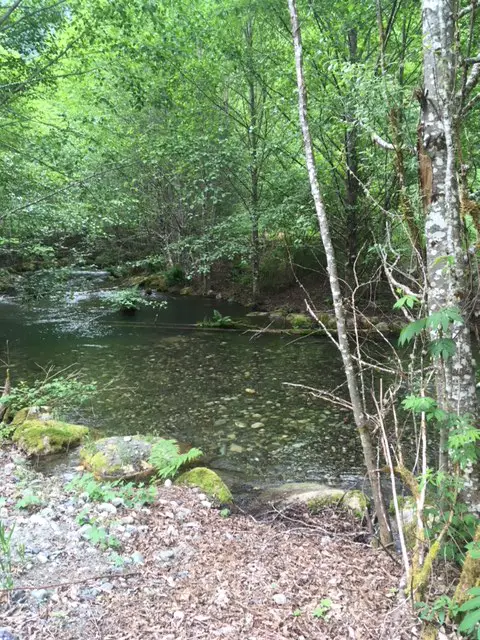Each year there is an ongoing conversation around the strength of the adult Steelhead population in the Chilliwack-Vedder (CV) River. There is little to no enumeration data on these returning fish, so much of the conversation is speculation. Whether amongst local fishing buddies, online forums, or social media there is no shortage of hotly debated perspectives on this fishery.
I wrote this article to shed some light on this fishery and consolidate existing pieces of enumeration data that is floating around the internet. And lastly, to promote some of the great volunteer work being done to support these incredible fish.
Chilliwack Steelhead Hatchery Program
Steelhead release activities have been documented as far back as 1929. From 1929 to late 1970’s Steelhead were released as fry and without any consistency. In 1981 the Chilliwack Hatchery was built and ended up being the release location for the first broodstock collected from the Chilliwack River. The Hatchery’s first Steelhead smolt release was done in May of 1992. This hatchery Steelhead program has continued to today.
Quick Facts
- Hatchery has a broodstock target of 70-80 Wild Steelhead (50:50 between bucks & does)
- Each Doe averages 5,000 eggs
- Yearly target of approximately 200,000 eggs
- Approximately 120,000 – 135,000 survive to the Smolt stage
- Smolts are released in early May each year
- In May of 2018, 125,000 smolts were released over the period of 3 days
- Adults return to spawn between December to April

2 Steelhead spawning
Meet Dave and Pete
Let me introduce Dave & Pete who first met in high school, have been friends for forty years, and are now both retired from the Department of Fisheries and Oceans (DFO). Dave has 37 years as a DFO Science Branch Technician, based out of Cultus Lake, BC. He Started fishing the CV river in 1960 and has been passionate about Steelhead ever since. Peter worked as a Fisheries Technician for 13 years with the International Pacific Salmon Commission also based out of the research station in Cultus Lake, BC. From there he worked for DFO for 30 years as a Fish Culturist (aka. a fish expert) at the Chilliwack River Hatchery. He too is an avid Steelheader and has been fishing the CV river for 58 years.
In keeping a pulse of the Steelhead and Salmon populations they have put a lot of river mileage on each year walking sections like the Centennial Channel and observing Steelhead and Coho even just for the enjoyment of seeing wild fish. Around the end of the Winter Steelhead run they spend many hours walking the upper section of the CV looking for spawning fish. Since 2011 they have been observing and documenting these spawning Steelhead.
Visual Fish Counts
The counts are observations that are captured visually. In order for a count standard they’ve tried to keep these count days to be as close as possible along with the actual viewing locations. The observations each year are done on 6 to 8 separate days spread across the tail end of the Winter Steelhead season (usually between mid April into late May). On each observation day Dave, Peter and Emma the dog are stopping at as many as 4 viewing locations in the upper Chilliwack River: Chilliwack Lake Outlet, Centennial Channel, Third Bridge and Angelwing Channel (see Google map below).
Please note, that visual count results are impacted by river conditions. For example, higher water levels will make it harder to spot fish.
Below are graphs outlining their Steelhead counts taken over the past 8 years (2011 to 2018).

Left: Dave Barnes, Right: Peter Buck
2011 – 2018 Winter Steelhead Enumeration
Total Counts by Year & Location
| Year | Centennial Channel | Angelwing Channel | Chilliwack Lake Outlet | Third Bridge | Total Steelhead |
|---|---|---|---|---|---|
| 2011 | 84 | - | - | 3 | 87 |
| 2012 | 38 | 13 | 83 | 8 | 142 |
| 2013 | 48 | 0 | 55 | 22 | 125 |
| 2014 | 19 | n/c | 56 | 7 | 82 |
| 2015 | 15 | n/c | 79 | 13 | 107 |
| 2016 | 25 | n/c | 39 | 19 | 83 |
| 2017 | 30 | n/c | 56 | 17 | 103 |
| 2018 | 15 | n/c | 2 | 2 | 19 |
Steelhead Daily Count Totals
Upper Chilliwack River Observation Locations
Centennial Channel
Near Riverside Campground, bridge on the forest service rd.
Angelwing Channel
Almost adjacent to 3rd bridge viewing location.
Chilliwack Lake Outlet
This viewing point is on the northwest end of the Chilliwack Lake. There is a little bridge near where the lake dumps into the Chilliwack River.
Third Bridge
The Third or Middle Creek bridge is off the Chilliwack Lake Rd and is the last bridge crossed before accessing the Chilliwack Lake. The bridge is immediately before the Foley Lake turnoff.
What have the 8 years of Observation shown?
- Steelhead are quick spawners, especially the females. Often see lone males hanging about but never single females. Additionally, Dave and Pete both believe they see different fish each week.
- The visual observation is close enough to see any present adipose fins on the fish in Centennial Channel. In this location they have never observed a clipped Steelhead (hatchery Steelhead).
- They have viewed Rainbow trout spawning with Steelhead in the CV system and may be the first to document this.
- CV Steelhead are relatively fussy regarding where they spawn, and often dig exploratory redds (spawning nests). This suggests that some of them may build more than one redd, and for this reason don’t consider redd counts to be accurate indications for numbers.
- Gravel augmentation is a viable means of increasing Steelhead spawning areas. Place it and they will use it.
Recommendations
Do we need to make any changes? What new actions are being put forward? If you ask Dave or Peter these questions, here are some of their recommendations:
- Close Chilliwack River to angling from Tamihi bridge upstream to current fishing boundary April 1st to protect staging and spawning Steelhead.
- More extensive enumeration of spawning areas. A long term commitment by Ministry of Environment would be required.
- Enumerate stock when water conditions are favorable. E.g. Snorkel survey using snorkel & wet suits.
- Meeting with biologist in charge to discuss possible changes that could affect survival rates.
- Change the practice of removing up to 80 wild fish every year to provide broodstock. E.g. Use hatchery fish for broodstock or other alternatives to native wild fish.
- Reduce number of wild brood stock from 70 pair to X? This asks the question, do we want to reduce the number of returning hatchery fish?
- Is the river at capacity for juvenile production or are more spawners required? This information would be critical before other options are taken.
- More gravel placement in upper river to be determined by a biologist or technician.
Conclusion
Dave and Pete believe the early run Steelhead stock is declining rapidly and share the same views for what could be done to improve the status quo for Steelhead on the CV system. I’d like to affirm many of their views as well, with their many years of experience via recreational, volunteering and work related, their perspective carries a lot of weight.
Anglers these days do seem to be basically apathetic to what is happening to the CV; none are advocating for the fish and only seem to care when numbers are down. It never hurts to continue the conversation and look for new ideas/actions and I hope this article prompts this. This is not to ignore that there are some incredible volunteers/programs working to improve the CV system, but if there are declining numbers of early Steelhead it only makes sense that change is needed.
In order to continue to improve this fishery we need better Steelhead enumeration. And this is why I appreciate these visual counts Dave and Peter have and continue to be doing each year. Their commitment and time is an fantastic example of what an angler should be in their community. Let’s hope this passion/attention on these topics inspires more people in the fishing community and as a result takes bigger strides forward to improving our wonderful shared resource in Steelhead.
Thank you!
About the Author
Massive thanks to Dave & Peter for all the time and information shared with me for this article. Also thank you to Rachel from the Fraser Valley Watersheds Coalition for the article photos.

My name is Jesse, I’ve been obsessed about fishing since I was a toddler trying to catch fish with my minnow net in any type of water. Today I have a passion to promote fishing in an educational, fun and respectful format.




Jesse thanks so much for pulling together this information about the work Dave and Peter have been doing for many years. Very informative and hopefully this work will lead to concrete action to enhance the steelhead fishery/survival in the CV system.
Thanks Aki for your comment! I really enjoyed the process as Dave & Peter are a wealth of knowledge in this area. I learned a lot and have a greater appreciation for this fishery and will do more to support this fishery and watershed in the future. Thanks again! Jesse
I’ve only been in the Chilliwack area for roughly two years now and I’ve been fly fishing the Chilliwack/vedder since I’ve been here. Just found your site and I must say it’s very informative. Thank you for the work and maybe I’ll see you out there one day.
Jon
Thanks Jon for taking the time to leave this comment. I’m glad BCFJ is helpful! Definitely say hi if you see me on the river. Cheers!
Thanks Jesse good article. The B.C. Federation of Drift Fishers often hoods out the Chilliack/Vedder as a great example of wild & hatchery steelhead coexisting. As the #1 river in B.C in angler numbers it’s also a significant economic booster to local economies.
Be assured that conservation & opportunity on the river are recognized & supported by groups such as our & also thru the provincial advisory process (FFRAC) & SFAB.
I have fished steelhead in the Chilliwack river for well over 50 years -I can recall when so few fish returned the river was closed to allow hatchery and wild fish to rebuild the runs.
My question is simple–Do returning Hatchery fish spawn above the hatchery?
In other words it is my suspicion that returning steelhead are in fact progeny from hatchery releases.
I know they use unclipped returning steelhead for eggs and milt supposedly to make sure the runs are from wild fish–but how do we know they are not hatchery fish that have matted with wild fish???
Great questions Bob, thanks for posting. I will start by saying I’m not an expert on the Steelhead in the Chilliwack River, Dave & Peter who I interviewed for this article were a wealth of knowledge!
In regards to the question of hatchery spawning above the hatchery, I believe the answer is yes but don’t know the exact break down. There was not a breakdown between hatch & wild with the visual counts of Steelhead in the 4 areas above the hatchery (right up to Chilliwack Lake outlet). Perhaps I’ll have to ask that of Dave & Peter for a rough estimate.
And on your last progeny question, I’m again not that helpful as I can’t honestly know. And I’d wonder if the hatchery has the resources to determine this itself? I’m not sure it does. That said, I would assume there is some overlap of the hatchery fish with wild.